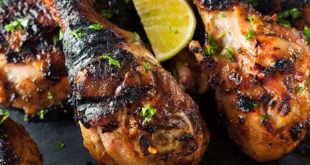OSHA requires Personal Protective Equipment (PPE) to help protect employees in the workplace, but it is up to the employer to decide if PPE is required. Many restaurant owners, however, have opted to implement PPE, especially when it comes to cut resistant gloves. And no wonder, a 2008 report by National Safety, Inc reported that 30% of lost time in the work place was due to cuts, slices and abrasions: 80% of those accidents were to the hands.
Cut Resistant Materials
Cut Levels & American Standards
As well as knowing the different material types, you should also know that there are different cut levels, and a significant difference between American and European standards.
There are 5 different cut levels: the highest number being the most resistant. And although it is up to you to decide what cut level is best for your business, it’s advised to test different products to find the right fit. You should also make sure that you are following American standards for cut level, instead of European standards. American standards are referred to as:
[unordered_list style=”green-dot”]- ASTM/ISEA (American Society for Testing and Materials/International Safety Equipment Association);
Whereas European standards are known as:
[unordered_list style=”green-dot”]- CE/EN388 (Conformité Européenne, meaning “European Conformity”/European Norm 388).
|
ANSI/ISEA |
Cut Level |
CE/EN388 |
|
100-199 |
0 |
100-199 |
|
200-499 |
1 |
120-249 |
|
500-999 |
2 |
250-499 |
|
1000-1499 |
3 |
500-999 |
|
1500-3499 |
4 |
1000-1999 |
|
3500+ |
5 |
2000+ |
The difference in standards are more pertinent when comparing the “safest gloves” available; in other words, when someone says that a glove is the “safest” there’s a vast difference in how safe that glove actually is, depending on the standard it was assigned.
HexArmor’s New Cut Resistant Glove
HexArmor recently introduced the NXT 10-302 cut resistant glove as a solution to cut injuries and exceeds ISEA and CE level 5. Interested? Check out this video:
Visit Tundra for more information on cut resistant gloves available.
 Corner Booth Blog | TundraFMP Restaurant Supply, News & Equipment Blog
Corner Booth Blog | TundraFMP Restaurant Supply, News & Equipment Blog





Nice article. We are always happy to see quality posts on the cut-resistance topic. We are a safety glove manufacturer and in our blog we include an infographic about the different levels of cut resistance, that your readers might also enjoy – http://www.superiorglove.com/pages/blog/infographic-cut-resistance/
That’s a great infographic! Thanks for sharing and I’ll make sure to share with our social fans too!
I thought the graph above that charted cut resistant materials for gloves was really interesting. With so many accidents due to cuts to the hand like mentioned in the first paragraph, I think having proper safety protection for your hands is extremely important. Do you tend to sacrifice mobility as the protection level increases? I’d be curious to know since it would definitely determine what cut resistant glove material to choose since it would be based on how you’ll use them.